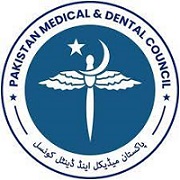SMOG AND HEALTH
Abstract
Smog is a declared threatening Public Health Emergency in South Asia recently. The most affected areas are Pakistan, India, and China.1 Pakistan is today the world's fourth most polluted country due to industrial and vehicular emissions, crop burning, and recent projects of coal as a source of energy. The air pollution level in our region is getting alarming and is considered to be among the unhealthiest worldwide.2
Most of the smog we see is "Photochemical Smog" containing volatile organic compounds, hydrocarbons, nitrogen, and sulfur dioxide. When the sunlight reacts with the nitrogen oxides and volatile organic compounds in the atmosphere, there is the production of airborne particles and smog. The problem is becoming serious over the last decade due to high levels of pollution due to vehicular smoke and industrial activities.3 Even now during the months of summer, there is now photochemical smog which is washed away by rain. Prolonged heavy exposure to hazardous air causes various health problems including asthma, bronchitis, lung cancer, skin cancer etc. 4
A study reporting the long-term effects of smog in the great London concluded that exposure to smog during the first year of life increased the risk of childhood asthma by 19.87%. 5
Pollution and winter weather conditions both shroud the cities in smog. Excessive population, shortage of funds for development especially municipal services, illiteracy, poverty, vehicular emissions, industrial pollution, fossil fuel powered plants, burning of trees for industrial development, burning of waste materials and coal being burned by thousands of brick kilns all contribute to the formation of smog.6
Certain Measures should be taken to control this alarming health hazard. Effective legislation, effective public awareness programs are needed via print and electronic media. Use of face masks particularly outdoors, avoidance of outdoor activities as much as possible, regular use of air purifiers at home and offices, minimize air pollution from cars and use public transport, and tree plantation are some of the measures to reduce smog effects.






